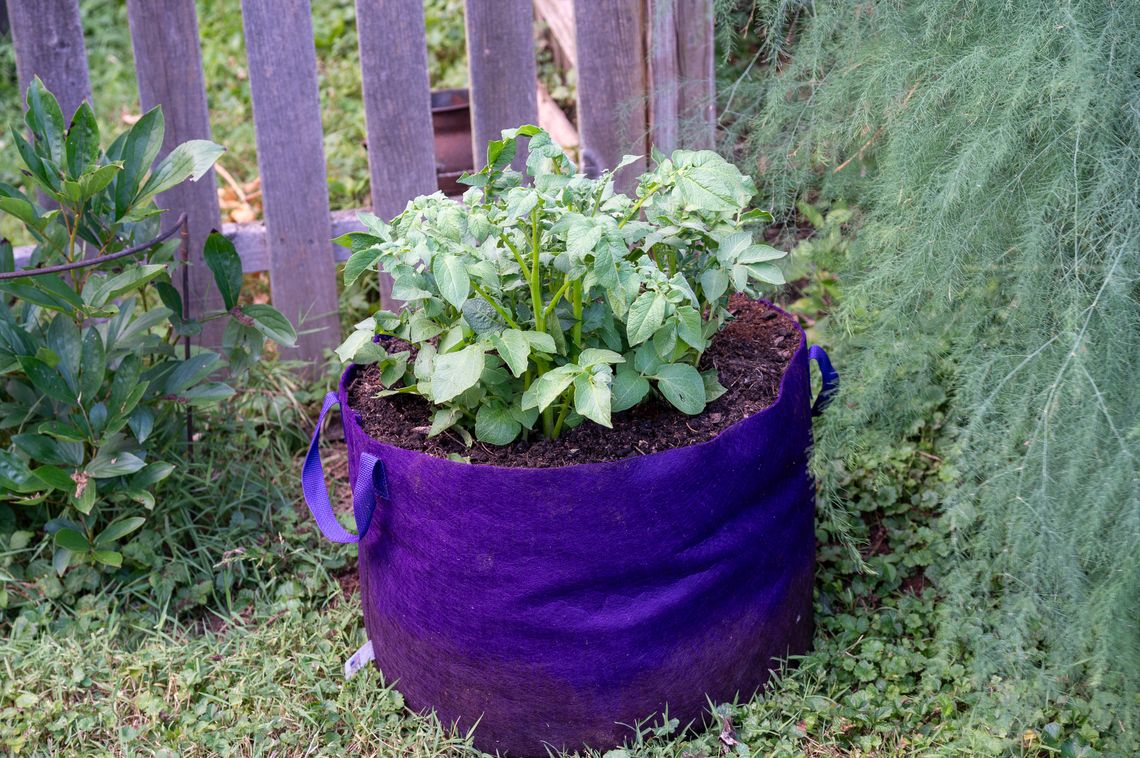



How to Grow Potatoes in a Bag
plant care
gardening projects

If you’ve got a smaller garden (or don’t have room for one!), food growing can seem daunting and inaccessible. However, there are plenty of foods that can grow in bags, like potatoes. If you’ve got a spot that gets a lot of sun (yes, even a patio or balcony will do), you can grow up to 15 pounds of fresh, delicious potatoes to enjoy -- without a real garden!
Here’s your easy, step-by-step guide to growing potatoes in a bag!
Supplies You'll Need to Grow Potatoes in a Bag
- Seed potatoes (6 to 8 per bag)
- 50-quart burlap sack or fiber grow bag
- Coconut coir (a sustainable alternative to peat moss)
- Compost (bagged or homemade)
- Water
Become a PHS Member to get exclusive access to GROW magazine and even more expert gardening guides, tips, and inspiration.
Step 1: Choose Your Seed Potatoes
Start with certified seed potatoes from a garden center or mail-order supplier. These are free from disease and are not treated with anti-sprouting agents like grocery store potatoes often are. Fingerling varieties work especially well in containers because they are small, colorful, and flavorful.
What are seed potatoes? They are simply potatoes with at least one “eye,” which is a dimple or sprout where new growth will form. You can use whole small potatoes or cut larger ones into chunks, making sure each piece has an eye.

Step 2: Mix Your Growing Medium
Blend equal parts coconut coir and compost in a large tub or bucket. This creates a loose, nutrient-rich mix that holds moisture without becoming soggy. Add about 3 inches of this mix to the bottom of your grow bag and water until moist.

Step 3: Add the Potatoes
Place your seed potatoes on top of the base layer, spacing them apart to allow room for growth. Cover them with about 2 inches of the compost-coir mix and water again.

Step 4: Water and Wait
Keep the soil evenly moist. In 1 to 2 weeks, green shoots will appear. Once they are a few inches tall, add more of the compost mix to cover the stems, leaving only the top leaves exposed. This encourages the plant to grow more tubers along the buried stems.

Step 5: Hill as They Grow
As your potato plants grow, continue adding compost mix every week or two, covering the stalks up to the lowest leaves. Keep going until your bag is full.
Tip: Always keep developing potatoes covered with soil. If they are exposed to sunlight, they will turn green and become inedible.

Step 6: Watch for Flowers
In about 6 weeks, your potato plants will begin to bloom. This means they are forming baby potatoes underground. You can harvest them at this stage for tender “new” potatoes, but plan to eat them within a few days since they do not store well.

Step 7: Harvest Your Crop
For full-sized potatoes, keep watering regularly until the plants naturally die back. The leaves and stalks will wilt and turn brown. Then it's time to harvest.
Gently tip your grow bag on its side and pour out the contents. Dig through the soil with your hands to find your homegrown potatoes.
Let them cure in a cool, dark, and well-ventilated place for a few days to toughen their skins. Brush off excess dirt but wait to wash them until you are ready to cook.

Bonus Tips for Growing Potatoes in a Bag:
- Start in early spring after the last frost.
- Rotate crops each season to help prevent disease.
- Try growing multiple varieties in different bags for more flavor and fun.
This easy container method makes it possible to grow potatoes almost anywhere. It’s a satisfying, low-maintenance project with delicious results, perfect for new and experienced gardeners alike.
Prefer a printable version? Download our PDF guide for easy reference while you plant, water, and harvest your potatoes!


